We completed the first full week of the new and strangest school year I had experienced in my entire teaching career. It is not the challenge of dealing with a crisis situation. Crises are the normal state of working with teenagers. It is the inability to rely on the outside reality which adds an extra challenge. A prepared Montessori environment is supposed to counter the hectic nature of youth development with stability, routine and predictability. Above all, a prepared Montessori environment needs to feel normal. This is everything that we do not have now. And with the absence of these components, we, the teachers, find it very hard to understand what it means to prepare a normal environment in a surrounding that is inhabited with a life threatening virus.
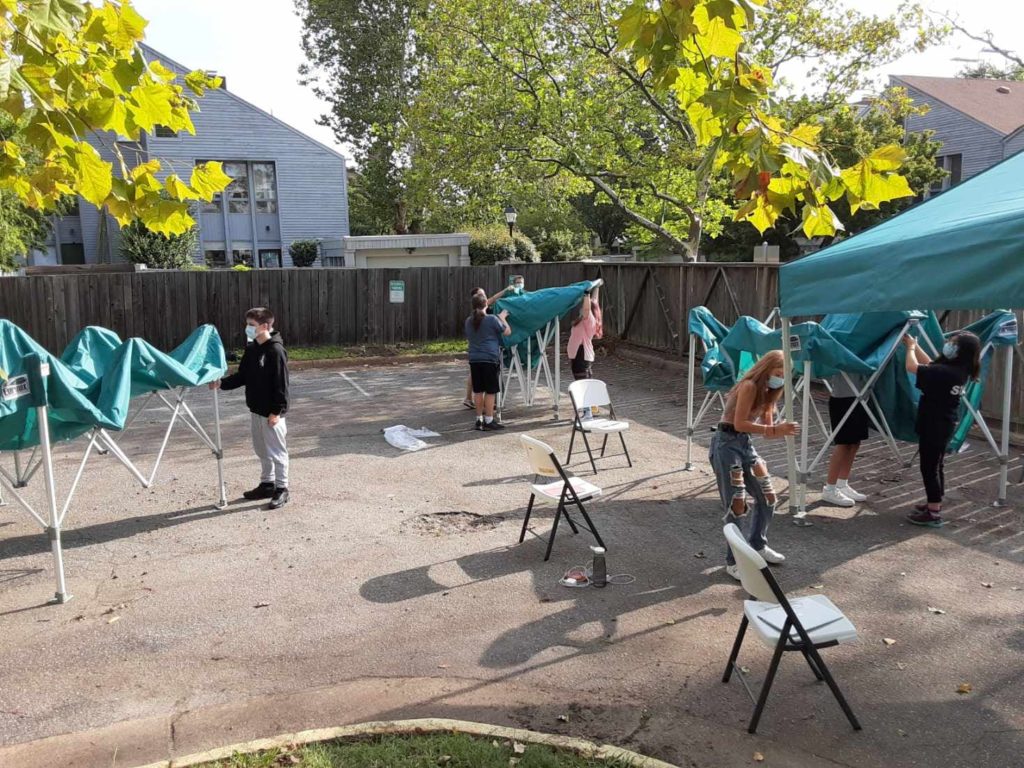
Our way to address this problem is to understand what the students need the most from school, to direct our efforts to satisfying these needs and then be flexible and pragmatic with everything else. Our experience indicates that two needs are most urgent: a minimally distracted schedule and some manner of in-person social contact. It does not matter whether we have off-campus lessons like at Makerspace, CIV, and the Slover Library. It is also not such a big deal if we need to rely on Zoom for classes. A sense of normalcy will evolve if the students have a clear daily and weekly timetable and as long as they can satisfy at least some of their skin hunger, i.e. share with each other a physical space, not only a virtual one.
We launched the new school year with the regular three orientation days. Everyone came to the outdoor classroom except three students who chose to participate from home. The students who arrived were so happy to meet each other in person again. So happy that they quickly forgot that we couldn’t go back yet to normal physical distance. We had to remind them from time to time to keep masks on and stay six feet apart.



The opening of the orientation felt awkward. We asked the students to unpack the new outdoor chairs and arrange them in the school’s parking lot. No one knew what the right arrangement should be. The students were so accustomed to think about each other as a potential virus hazard that they ended up locating the chairs too far from each other. We sat in an oversized circle and looked at each other from afar. I asked the students to shrink the circle to a diameter that felt more intimate while keeping a safe distance.
We tried to log in Zoom in order to include the three students who participated from home. We realized that the WiFi wasn’t working and so one student called them with her video phone app. As always, we started with five minutes meditation. Introducing meditation to the new students presented an icebreaking opportunity. I asked the returning students to explain the procedure to the new ones. That was actually a softball invitation to mock the practice and me as the students usually do. Then we played a game in which the students introduced themselves by name and their favorite food. We went in a circle and each student had to repeat all the previous names and foods. After we completed the round, I congratulated the students and gave a short explanation about the challenge of this year: establishing a routine and a school community that brings together students in the outdoor classroom and home via Zoom.
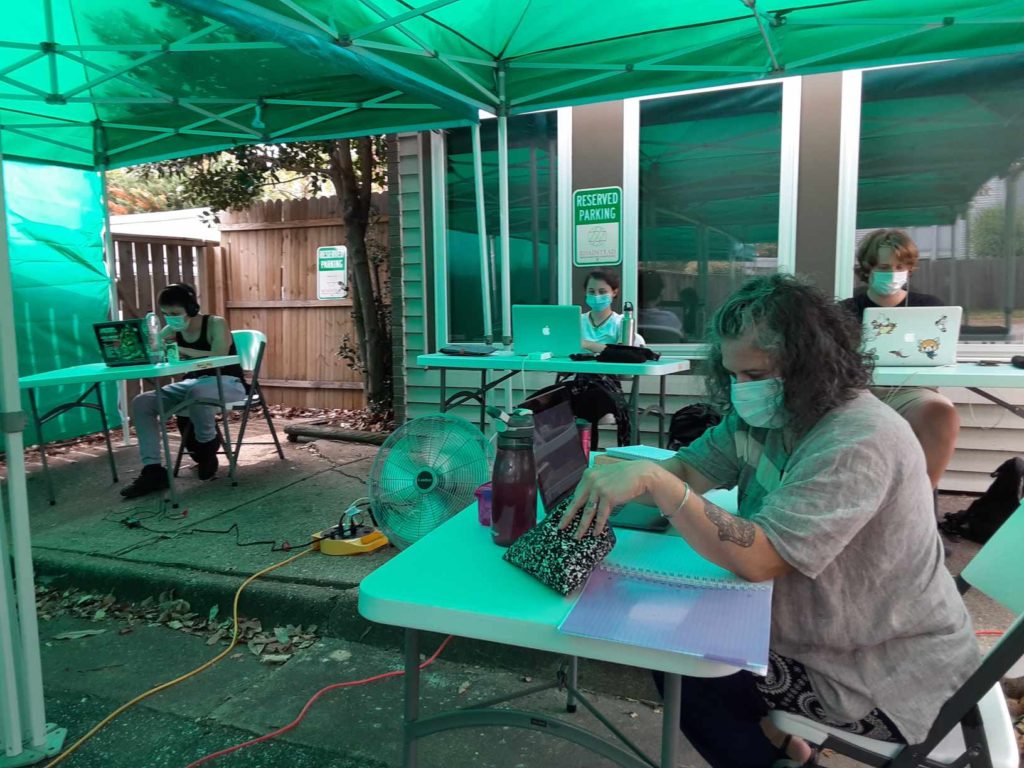

The new canopy tents arrived last Friday evening, after the last orientation day. Luckily we got three canopy tents that served us for a couple of days. One of the days was too hot, 95F, so we decided to meet over Zoom from home. Communicating with facial images inside squares over the screen an entire school day reminded me again how draining virtual schooling is. We don’t pay much attention to how much energy we exchange just from the proximity to physical bodies. I heard once that researchers found that trees support and communicate with each other by creating a network of entangled roots. I feel that we, humans, do the same, but with energy waves. Without it, we are like a lonely plant in a pot.
The outdoor classroom started to feel like our space when we set up our new canopy tents on Monday. The students attached the 10 feet x 10 feet tents to each other. They preferred to create one large shared space over small private ones. That affirmed our understanding that they were eager to feel physically together again.
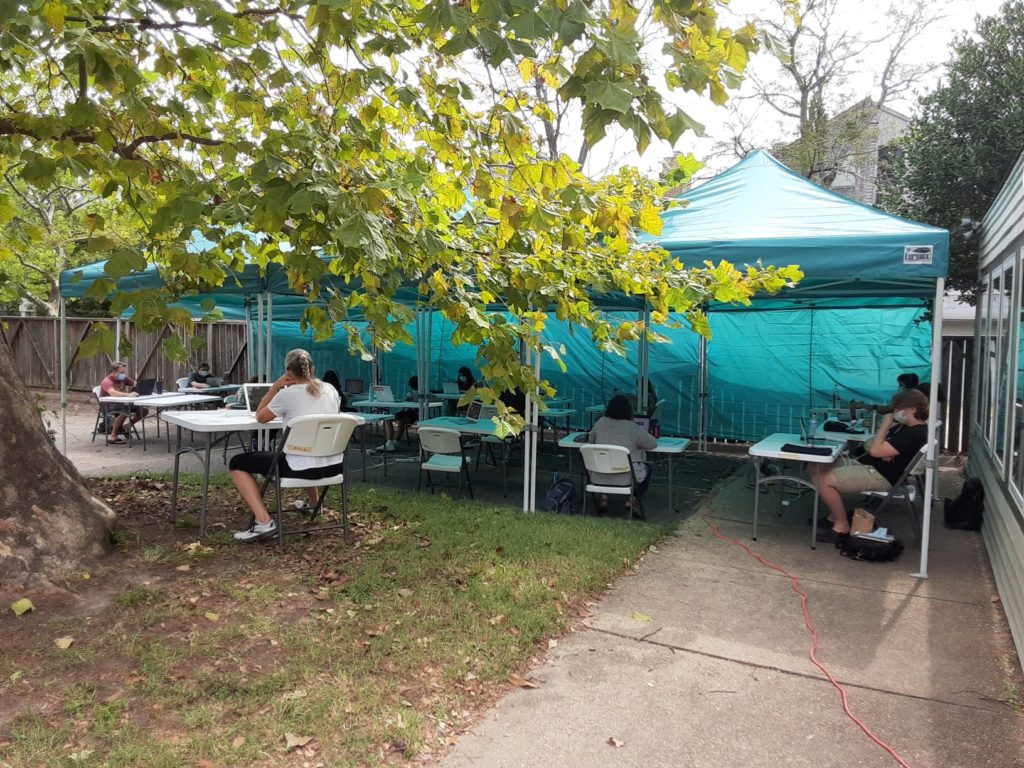

The outside light radiated through the canopy tent walls painting the air within the tents with the turquoise color of the fabric. The soft mixture of green and blue created a serene atmosphere that stood apart from the sharp yellow light of the air outside the tents. Sitting within this calming turquoise light, the students quickly immersed themselves in a work cycle mode. Quite quickly I could sense the magical quietness of the work cycle time which we used to have in our indoor space.
Our afternoon group lessons went also well. The students met with their teachers over Zoom. The sessions looked like a continuation of the work cycle when I watched them without logging in the Zoom rooms. There wasn’t much talk, except when a teacher addressed students with a speaking task. I could see the lively interaction when I logged in.
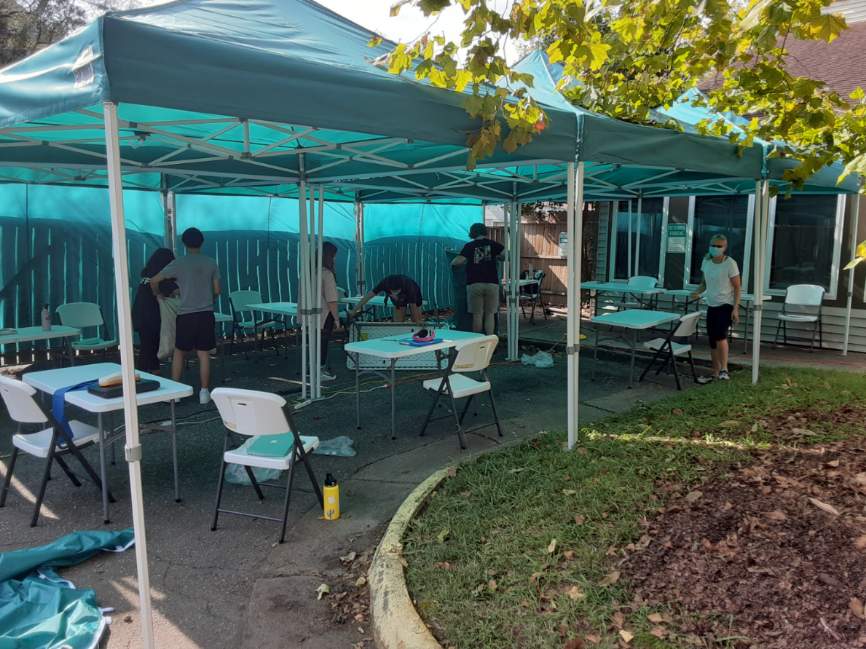

I appreciate our ability to create outdoors this serenity which is so unique to Montessori schools at all ages. However, I did miss this week the goofy social interactions that we used to have before the COVID-19 crisis. Lunchtime, especially, was the part of the day when students used to become playful and chatty. They would lie on the couches, beanbags, the floor, play music, show each other favorite clips or games or just have typical teenager conversations. I could hear again the lovely chattiness when the students took off masks because they were eating lunch. However, once they finished their food the students needed to put on their masks again. They took it like an implicit signal to shut up. Keeping physical distance also signals an emotional distance. That is not a great attraction to being goofy with each other.
When we had a community meeting on Friday (from home, due to a heat wave), students started to talk about bringing furniture from home and creating a personal space in their sitting station. They asked if they could do it, considering the fact that we assigned the same table and chair to each student. We did it to limit the possibility of infection. Usually they can move from one sitting place to another in the classroom. We encouraged them to create a personal space. We clarified that we did not expect them to use only the furniture we bought for the outdoor classroom. They are highly encouraged to bring whatever will make them feel more comfortable in the space.
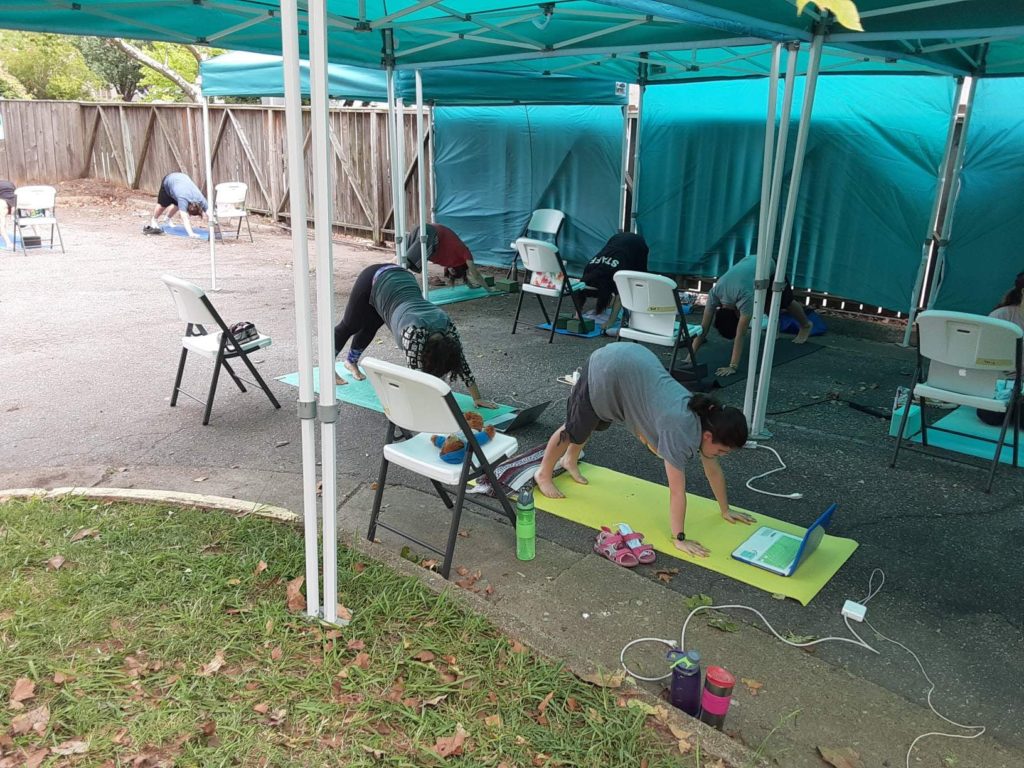

I believe that it will take some time until the students make the space look more like their own and then, also, warm up to each other. It depends also on how often the weather will allow us to meet in the outdoor classroom. The forecast for the next couple of weeks is for many rainy days. Zoom will help us keep a stable schedule. Hopefully, we will find ways to cope also with rain so that we will be able to meet under the canopy tents as much as possible.